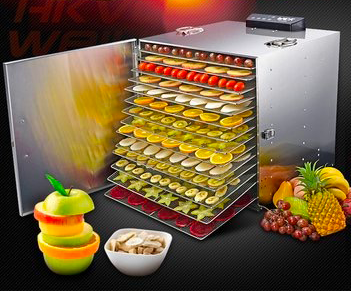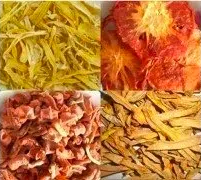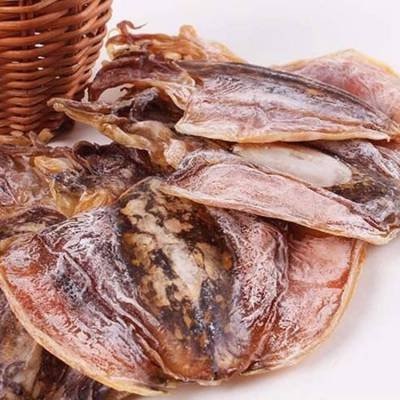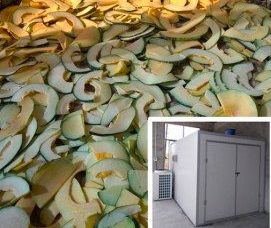
Content Menu
● Introduction
● Understanding Food Drying Machines
>> What is a Heat Pump Dryer?
>> How Does a Heat Pump Dryer Work?
● Advantages of Using Hotpoint Heat Pump Dryers
>> 1. Energy Efficiency
>> 2. Cost Savings
>> 3. Gentle Drying Process
>> 4. Environmentally Friendly
>> 5. Versatility in Drying Applications
● Comparing Hotpoint Heat Pump Dryers with Traditional Dryers
● Applications of Food Drying Machines
>> 1. Fruits and Vegetables
>> 2. Herbs and Spices
>> 3. Meat Products
>> 4. Snack Foods
>> 5. Dairy Products
● Maintenance Tips for Heat Pump Dryers
● The Future of Food Drying Technology
>> Innovations on the Horizon
● Conclusion
● Related Questions
>> 1. What types of foods can be dried using a heat pump dryer?
>> 2. How much energy does a Hotpoint Heat Pump Dryer consume?
>> 3. Can I use a heat pump dryer for commercial purposes?
>> 4. How do I maintain my Hotpoint Heat Pump Dryer?
>> 5. What are the advantages of using a heat pump dryer over traditional methods?
Introduction
In the world of food processing and preservation, the efficiency of drying methods is crucial. As a leading manufacturer of food drying machines in China, we understand the importance of energy efficiency and cost-effectiveness. This article will explore how food drying machines, specifically focusing on the technology behind heat pump dryers like the Hotpoint Heat Pump Dryer, save energy compared to traditional drying methods.

Understanding Food Drying Machines
Food drying is a method used to preserve food by removing moisture. This process helps prevent spoilage and extends shelf life. There are various types of food drying machines available in the market, but heat pump dryers have gained significant attention due to their energy efficiency and effectiveness.
What is a Heat Pump Dryer?
A heat pump dryer is an advanced drying machine that uses a refrigeration cycle to remove moisture from food products. Unlike traditional dryers that rely on direct heat, heat pump dryers recycle warm air, making them more efficient in energy consumption.
How Does a Heat Pump Dryer Work?
The operation of a heat pump dryer involves several key components:
1. Evaporator: Absorbs moisture from the air inside the dryer.
2. Compressor: Increases the temperature and pressure of the refrigerant.
3. Condenser: Releases heat to warm the air before it is circulated back into the dryer.
4. Expansion Valve: Reduces the pressure of the refrigerant, allowing it to evaporate and absorb moisture again.
This closed-loop system allows for continuous recycling of air, significantly reducing energy consumption.
Advantages of Using Hotpoint Heat Pump Dryers
1. Energy Efficiency
One of the primary advantages of using a Hotpoint Heat Pump Dryer is its energy efficiency. These dryers use significantly less energy than traditional electric or gas dryers. The ability to recycle air means less energy is required to maintain optimal drying temperatures.
2. Cost Savings
By consuming less energy, businesses can save significantly on their utility bills. Over time, these savings can offset the initial investment in a heat pump dryer. Businesses that utilize Hotpoint Heat Pump Dryers often report lower operational costs due to reduced energy consumption.

3. Gentle Drying Process
Heat pump dryers operate at lower temperatures than conventional dryers, which helps preserve the quality and nutritional value of food products. This gentle drying process reduces the risk of over-drying or damaging delicate foods.
4. Environmentally Friendly
Using less energy not only saves money but also reduces carbon footprints. For companies looking to adopt sustainable practices, investing in a Hotpoint Heat Pump Dryer aligns with eco-friendly goals.
5. Versatility in Drying Applications
Hotpoint Heat Pump Dryers are versatile and can handle various types of food products, including fruits, vegetables, meats, and herbs. This adaptability makes them an excellent choice for businesses involved in diverse food processing operations.
Comparing Hotpoint Heat Pump Dryers with Traditional Dryers
To better understand how Hotpoint Heat Pump Dryers save energy compared to traditional dryers, let's look at some key differences:
| Feature | Hotpoint Heat Pump Dryer | Traditional Dryer |
|-------------------------------|--------------------------|--------------------------|
| Energy Consumption | Low | High |
| Operating Temperature | Low | High |
| Moisture Removal Efficiency | High | Moderate |
| Environmental Impact | Minimal | Significant |
| Cost of Operation | Lower | Higher |
Applications of Food Drying Machines
Heat pump dryers are versatile and can be used for various applications in food processing:
- Fruits and Vegetables: Removing moisture while preserving flavor and nutrients.
- Herbs and Spices: Maintaining potency and aroma during the drying process.
- Meat Products: Ensuring safety by thoroughly drying while preventing spoilage.
- Snack Foods: Creating healthy snacks without added preservatives.
- Dairy Products: Drying cheese or yogurt for long-term storage without compromising taste.
1. Fruits and Vegetables
Fruits like apples, bananas, and berries can be dried using Hotpoint Heat Pump Dryers to create healthy snacks or ingredients for recipes. The low-temperature drying preserves their natural flavors and colors while maintaining essential vitamins and minerals.
2. Herbs and Spices
For businesses dealing with herbs and spices, maintaining their aromatic properties during drying is crucial. The gentle process offered by heat pump dryers ensures that these characteristics remain intact, providing high-quality end products.
3. Meat Products
Meat products require careful handling during the drying process to ensure safety and quality. Hotpoint Heat Pump Dryers can effectively remove moisture while preventing bacterial growth, making them ideal for jerky production or other dried meat products.
4. Snack Foods
The growing trend towards healthy snacking has led many manufacturers to explore options like dried fruits or vegetable chips. Using a heat pump dryer allows businesses to produce these snacks without adding preservatives or artificial ingredients.
5. Dairy Products
Dairy products such as cheese can also benefit from heat pump drying technology. By removing moisture efficiently while preserving flavor, manufacturers can create powdered cheese or yogurt that has a longer shelf life.
Maintenance Tips for Heat Pump Dryers
To ensure optimal performance and longevity of your Hotpoint Heat Pump Dryer, consider these maintenance tips:
1. Regular Cleaning: Keep filters clean to maintain airflow and efficiency.
2. Check Seals: Ensure door seals are intact to prevent heat loss.
3. Inspect Components: Regularly check components for wear and tear.
4. Professional Servicing: Schedule annual maintenance with professionals.
5. Monitor Performance: Keep track of drying times and adjust settings as necessary for optimal results.
The Future of Food Drying Technology
As technology continues to advance, we can expect further innovations in food drying methods. The integration of smart technology into machines like Hotpoint Heat Pump Dryers could lead to enhanced monitoring capabilities, allowing users to track humidity levels and adjust settings automatically for optimal performance.
Additionally, as sustainability becomes increasingly important in food production, manufacturers will likely focus on developing even more energy-efficient solutions that minimize environmental impact while maximizing product quality.
Innovations on the Horizon
- Smart Sensors: Future models may include sensors that monitor moisture levels in real-time, adjusting drying conditions automatically.
- IoT Integration: Connecting machines to IoT platforms could allow operators to control settings remotely via smartphones or computers.
- Advanced Materials: New materials that enhance insulation could improve energy efficiency even further.
Conclusion
Hotpoint Heat Pump Dryers represent a significant advancement in food drying technology, offering numerous benefits over traditional methods. Their energy efficiency not only leads to cost savings but also supports environmentally friendly practices in food processing. By understanding how these machines work and their advantages, businesses can make informed decisions that enhance their operations while preserving product quality.
Investing in a Hotpoint Heat Pump Dryer is not just about improving efficiency; it's about embracing a sustainable future for food processing that prioritizes both quality and environmental responsibility.

Related Questions
1. What types of foods can be dried using a heat pump dryer?
Heat pump dryers can be used for various foods including fruits, vegetables, herbs, meats, dairy products, and snack foods.
2. How much energy does a Hotpoint Heat Pump Dryer consume?
Hotpoint Heat Pump Dryers consume significantly less energy compared to traditional dryers due to their efficient recycling of warm air.
3. Can I use a heat pump dryer for commercial purposes?
Yes, heat pump dryers are suitable for both residential and commercial applications due to their efficiency and capacity options.
4. How do I maintain my Hotpoint Heat Pump Dryer?
Regular cleaning of filters, checking seals, inspecting components, monitoring performance, and scheduling professional servicing are essential maintenance practices.
5. What are the advantages of using a heat pump dryer over traditional methods?
The advantages include lower energy consumption, cost savings, gentle drying processes that preserve food quality, minimal environmental impact, and versatility across various applications in food processing.












